Photoluminescence of Quantum Well
Header
- Files for the tutorial located in nextnano++\examples\tricks_and_hacks
1D_PL_of_QW_absorption_nnp.in
1D_PL_of_QW_nnp.in
1D_PL_of_QW_nnp_absorption_spectrum.dat
- Output Files:
bias_00000\Optics\spont_emission_power_region_longitudinal_nm.dat
- Scope:
In this tutorial, we show an approach how to model photoluminescence (PL) in 1D QW structures. The following is covered:
Short overview of the most essential groups which are needed in the input file for PL simulations
How to compute the absorption spectrum, when no experimental data is available
Results: photoluminescence spectra
Limitations of the simulation
- Important keywords:
classical{ energy_resolved_density{} energy_distribution{} }optics{ irradiation{} semiclassical_spectra{} quantum_spectra{} }quantum,current{}
Introduction
What are we modelling? In short, light impinges on the surface of the structure parallel to the growth direction. A certain fraction of the total photon flux penetrates into the material and is absorbed, which leads to generation of mobile charge carriers (photogeneration). These carriers are lifted into excited states. If an excited electron recombines radiatively with a hole, light is emitted (spontaneous emission). As depicted in Figure 2.4.589, the recombination process happens mainly in the quantum well.
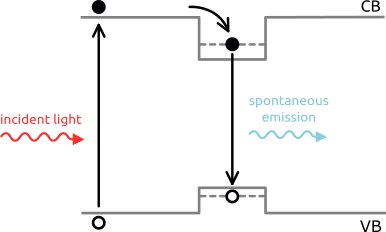
Figure 2.4.589 Visualization of involved processes: 1) light absorption and generation of electron - hole pairs, 2) trapping of carriers inside the quantum well, 3) recombination and spontaneous emission of light
The quantum well structure under consideration in this tutorial consists of the following material layers:
Layer |
Material |
Thickness (nm) |
1 |
Al0.36Ga0.64 As |
500 |
2 |
GaAs |
7 |
3 |
Al0.36Ga0.64 As |
500 |
Substrate |
GaAs |
1000 |
Simulation scheme
In our model we treat the absorption and generation of charge carriers within a semiclassical approach. The current equation is calculated self-consistently within the Schrödinger and Poisson equations in order to get accurate charge carrier densities. Afterwards, the luminescence spectra are calculated quantum mechanically based on the occupied states.
General approach
One of the most important process in our simulation is the generation of charge carriers, which is governed by the generation rate
Figure 2.4.590 visualizes the idea of our procedure. The 1. step is running the input file 1D_PL_of_QW_absorption_nnp.in, which does not include any optical phenomena (photogeneration, emission, … ). Then the 2. step is to run the normal input file 1D_PL_of_QW_nnp.in, which includes generation of carriers, using the imported absorption spectrum from the 1. step. Normally, one has to repeat the whole cycle, until the absorption spectra fully converge. For simplicity, we assume that no additional repetition is needed.
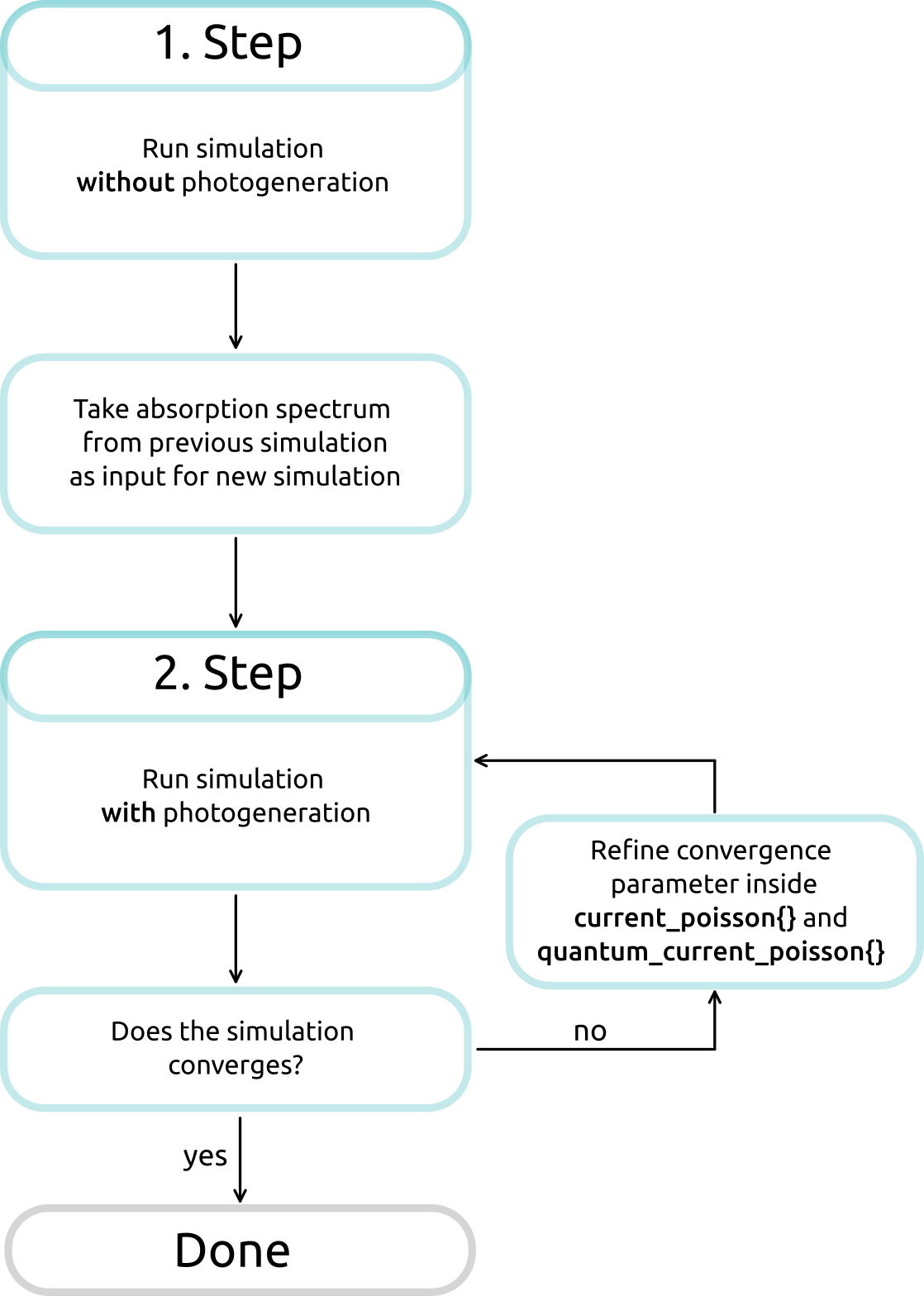
Figure 2.4.590 Iterative procedure calculating absorption spectrum until convergences is reached
Input file
The optical phenomena related to the irradiation, absorption and spontaneous emission
processes, which should be taken into account in the simulation, have to be specified in the optics{ } block.
The absorption process is modelled within a semiclassical approach calling irradiation{} and semiclassical_spectra{}.
The spontaneous emission is treated quantum mechanically inside the block quantum_spectra{}:
optics{
irradiation{
global_illumination{ # specification of the light source, i.e. illumination spectrum
direction_x=1
gaussian_spectrum{
irradiance = $irradiance*1e4
wavelength = $peak_wavelength
gamma = 0.01
}
global_absorption_coeff{ # specification of absorption spectrum
import_spectrum{# choice of imported file with previously calculated abs spectra
import_from = "my_abs"
cutoff = yes
}
}
photo_generation{ # enabling photogeneration
output_energy_resolved = yes
}
output_spectra{ # output options
illumination = yes
absorption = yes
}
}
semiclassical_spectra{ # important group for absorption spectrum
refractive_index = 3.14768486
output_spectra{
absorption = yes
emission = yes
}
quantum_spectra{ # calculate emission spectrum quantum mechanically for the quantum region
name = "quantum_region"
intraband = no
interband = yes
polarization{ name = "longitudinal" re = [1,0,0] }
k_integration{
relative_size = 0.3
num_subpoints = 5
num_points = 10
#force_k0_subspace = yes
}
output_spectra{
spectra_over_energy = yes
spectra_over_wavelength = yes
emission = yes
power_spectra = yes
}
# settings for output spectra
energy_min = 0.001
energy_max = 5.0
energy_resolution = 0.001
spontaneous_emission = yes
energy_broadening_lorentzian= 1.0e-2
}
}
The absorption spectrum used in the group irradiation{} should be imported from 1D_PL_of_QW_absorption_nnp.in.
import{
directory = "...1D_PL_of_QW_absorption_nnp\bias_00000\Optical\" # location of the file with absorption spectrum - it should be changed accordingly
file{
name = "my_abs" # rename filename
filename = "computed_absorption_spectrum_nm.dat" # reference desired filename
format = DAT
}
}
Inside the group classical{ } one has to specify energy resolved densities n(x,E) and p(x,E), which
are required for the semiclassical absorption and emission spectra. More information on the underlying
equations can be found here
classical{
Gamma{} HH{} LH{} # bands involved in 1 band calculation
energy_resolved_density{
# calculate position and energy resolved electron and hole densities: n(x,E), p(x,E)
# required for calculation of semiclassical emission and absorption spectra
min = -5.0
max = 5.0
energy_resolution = 0.001
only_density_quantum_regions = no
}
energy_distribution{
# settings for energy resolved density
min = -4.0
max = 4.0
energy_resolution = 0.001
only_density_quantum_regions = no
}
}
To calculate the quantum mechanical emission spectra, one has to include the group quantum{ }. The group quantum{ } as well as current{} and poisson{ } are also required for self-consistent quantum-current-poisson calculations. Inside these group proper convergence parameters have to be chosen. In this part, one has to think about proper convergence parameters for the solvers.
poisson{ ... }
currents{ ... }
quantum{ ... }
Note that proper boundary conditions are needed for Poisson and current equation. These are imposed by contact regions.
In our simulation, we apply ohmic{} contacts only to the bottom of the substrate, i.e. to the not illuminated side of the structure.
contacts{
ohmic{ name = "whatever" bias = 0.0 }
}
Simulation
In the simulation a light source with Gaussian spectrum with central wavelength
Results
First, we have to calculate suitable absorption spectra with the input file 1D_PL_of_QW_absorption_nnp.in.
Figure 2.4.591 shows the calculated absorption spectrum at each temperature.
For all temperatures, the absorption coefficient at
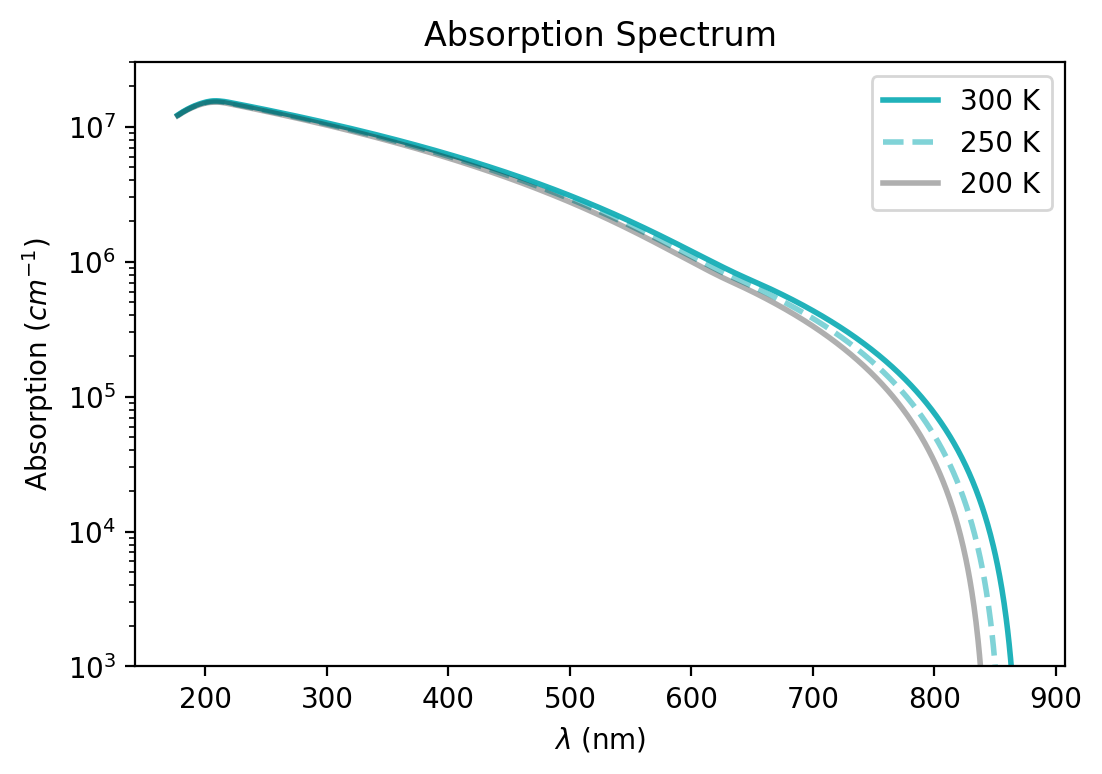
Figure 2.4.591 Calculated absorption spectrum
Now we can run the main input file 1D_PL_of_QW_nnp.in, which imports and uses the computed absorption spectrum.
Band edges
Figure 2.4.592 shows the energy profiles with electron- and hole-Fermi levels. It is visible that boundary conditions (contacts) are only imposed on the right side of the structure. This set up was found to have better convergence behavior.
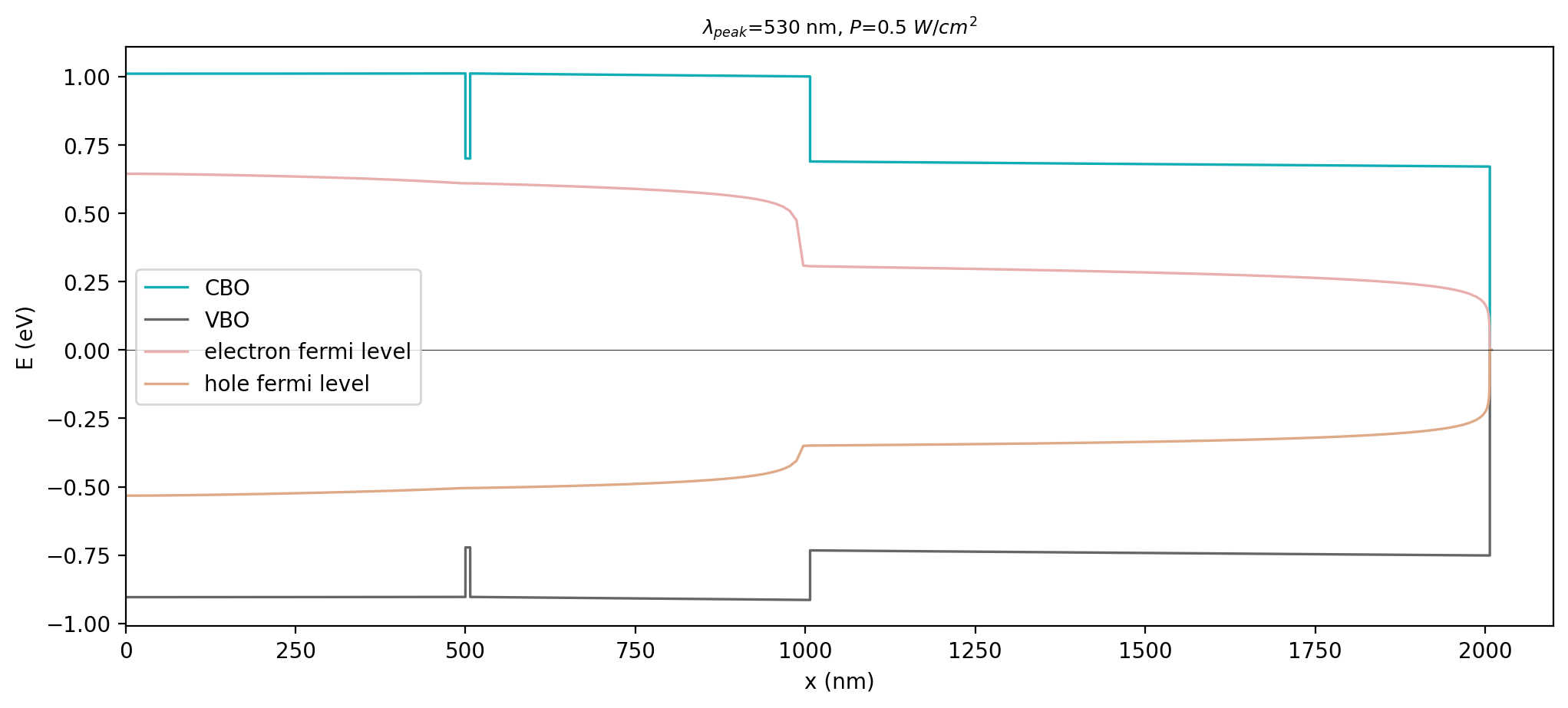
Figure 2.4.592 Energy profiles of conduction band (CBO) and valence band (VBO), with electron- and hole-Fermi levels across the structure
Electron/ hole density
Figure 2.4.593 illustrates the spatial and energy distribution of electrons and holes with respect to the band edges for
case: Pillumination 0.5
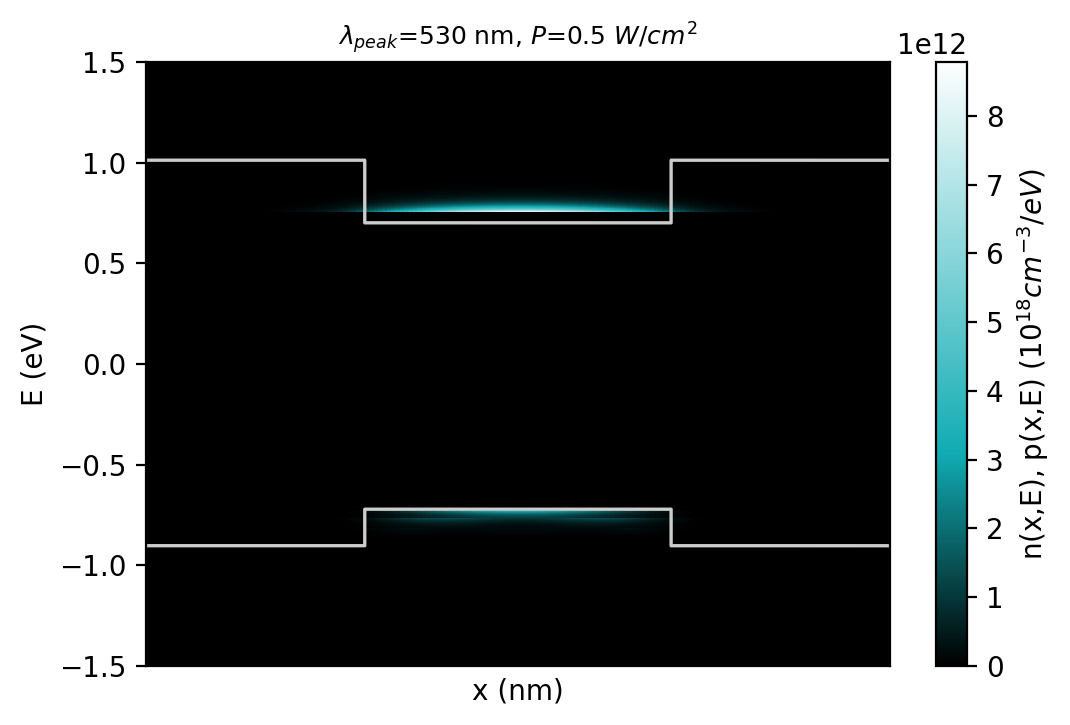
Figure 2.4.593 Electron density n(x,E) and hole density p(x,E) with conduction and valence band edges at 300K.
Photogeneration
Figure 2.4.594 depicts the spatial and energy resolved generation rate inside the structure for the case:
Pillumination 0.5
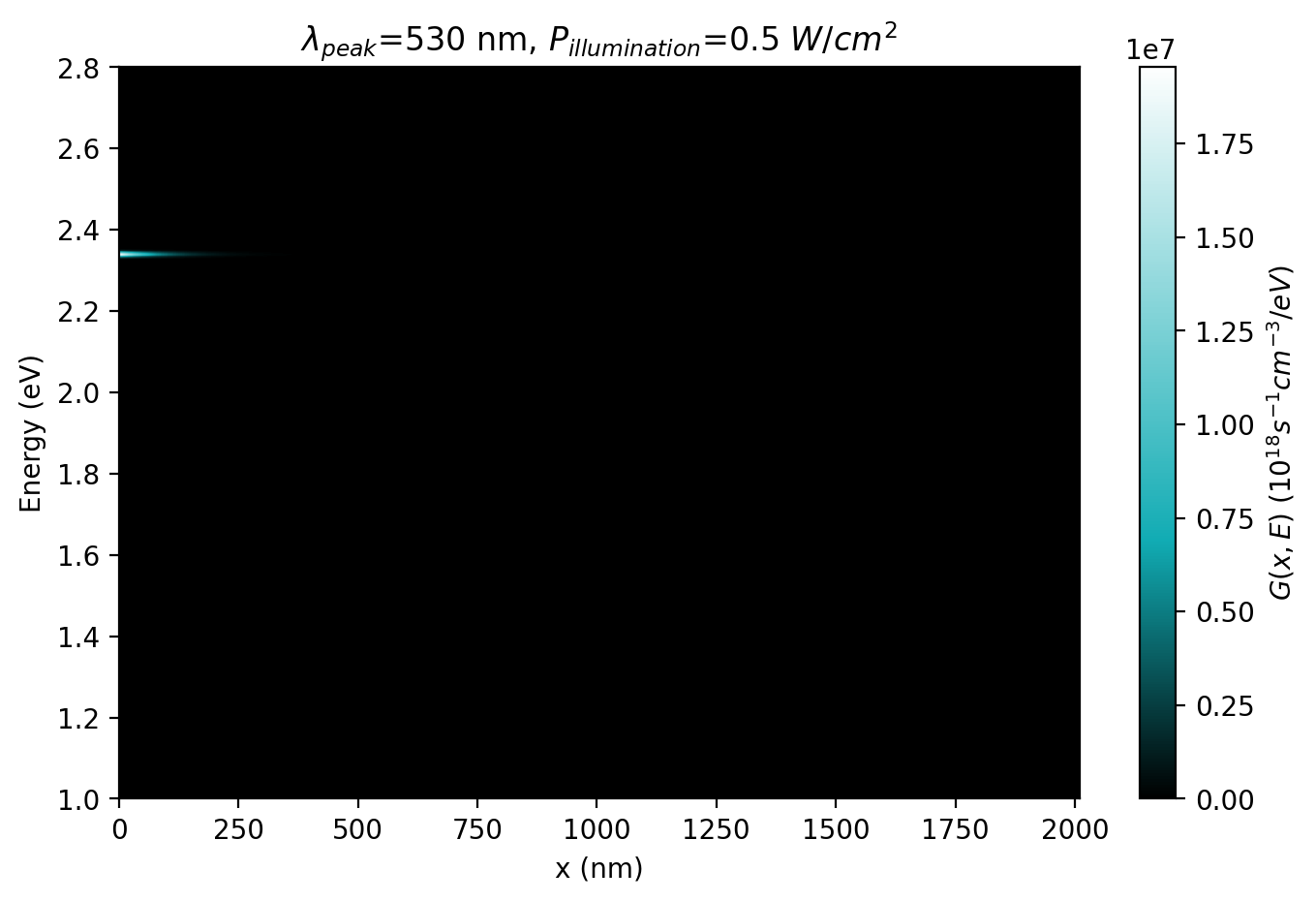
Figure 2.4.594 Photogeneration rate
Spontaneous emission spectrum
Figure 2.4.595 shows the normalized spontaneous emission spectra at different temperatures. The peak of the emission spectra are primarily attributed to the Ee1 - Eh1 transition inside the quantum well. Due to band gap shrinking the peak shifts to higher wavelengths with increasing temperatures. At higher temperatures the contribution from other transitions, such as Ee2 - Eh1 to the spectra becomes visible. Thus, the spectrum exhibit a broadening.
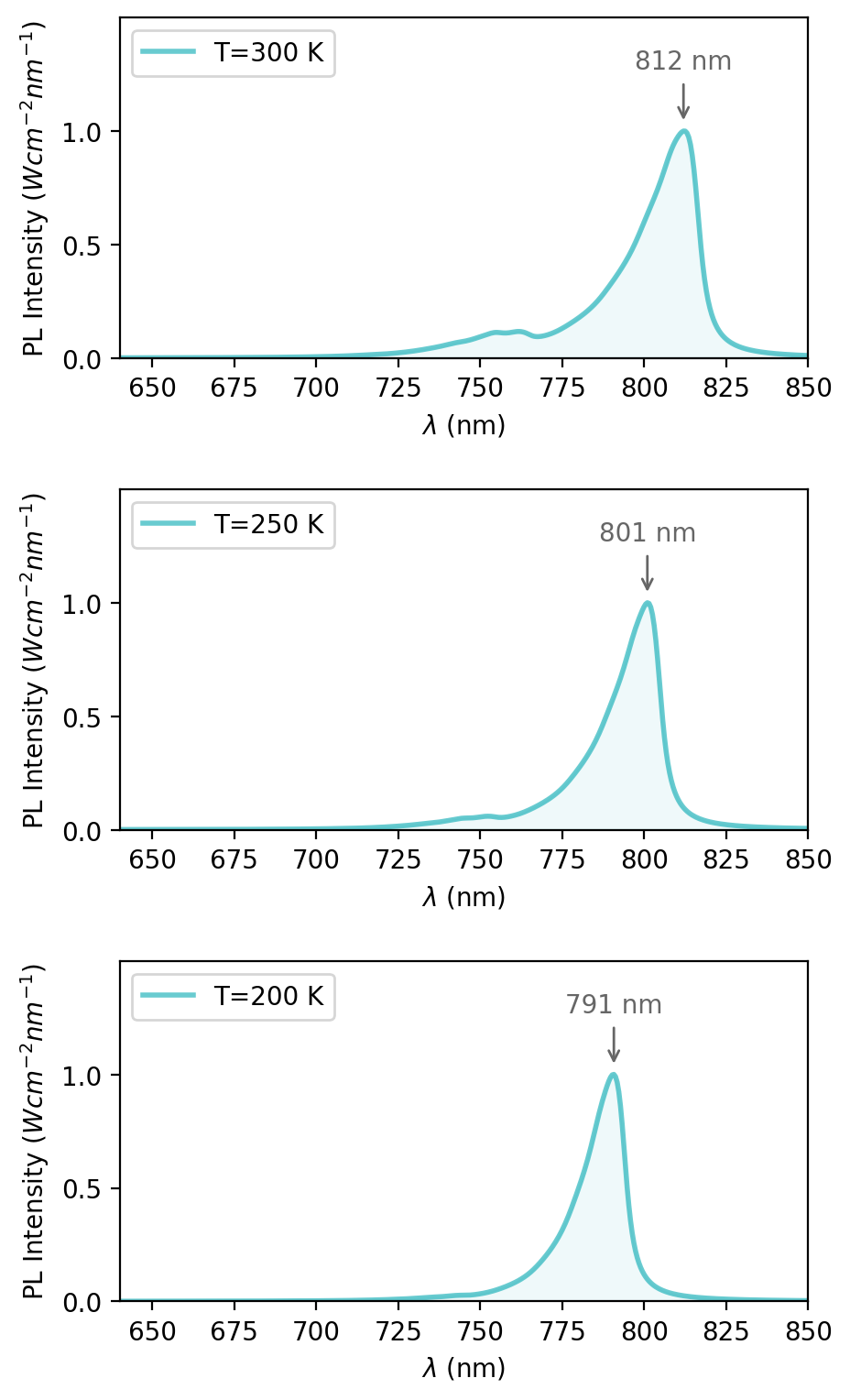
Figure 2.4.595 Normalized luminescence spectra with highlighted peak wavelength at each temperature (200 K, 250 K and 300 K), when illuminated
by P = 0.5
Temperature dependence of emitted intensity
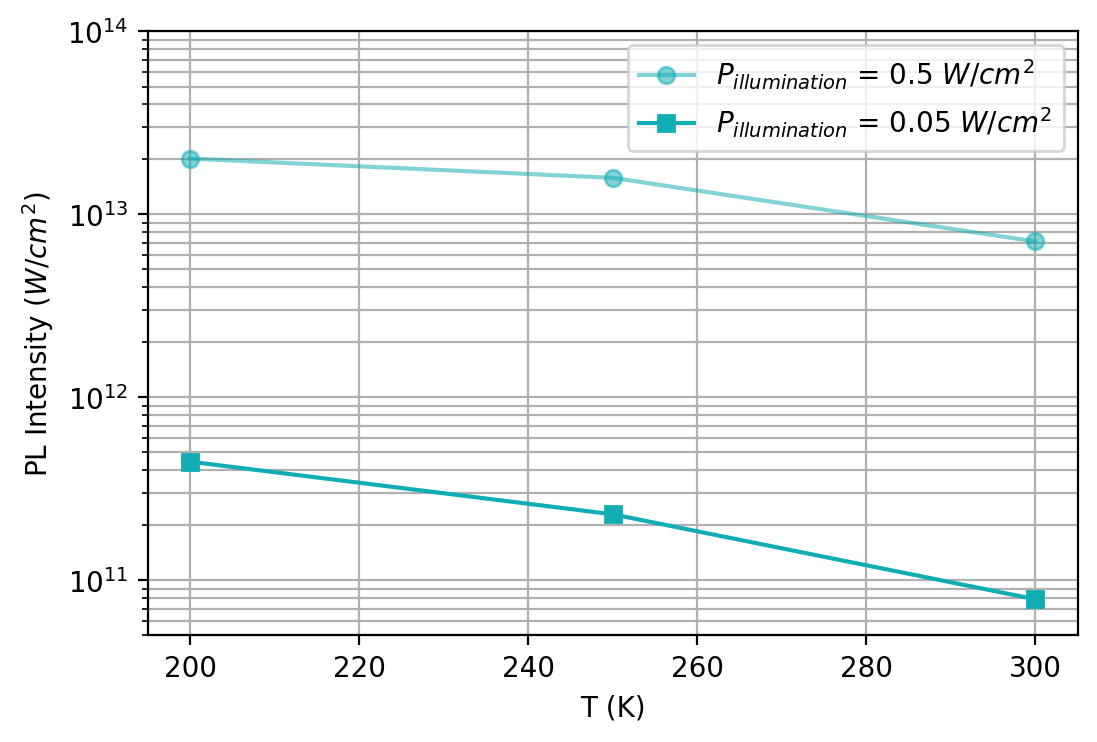
Figure 2.4.596 Total emitted intensity as a function of temperature.
Last update: 17/07/2024